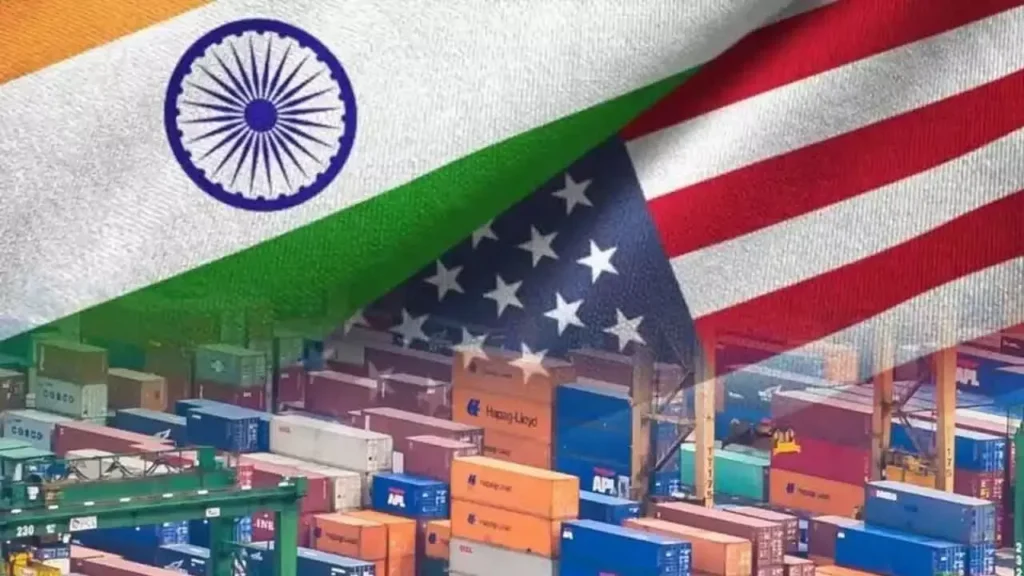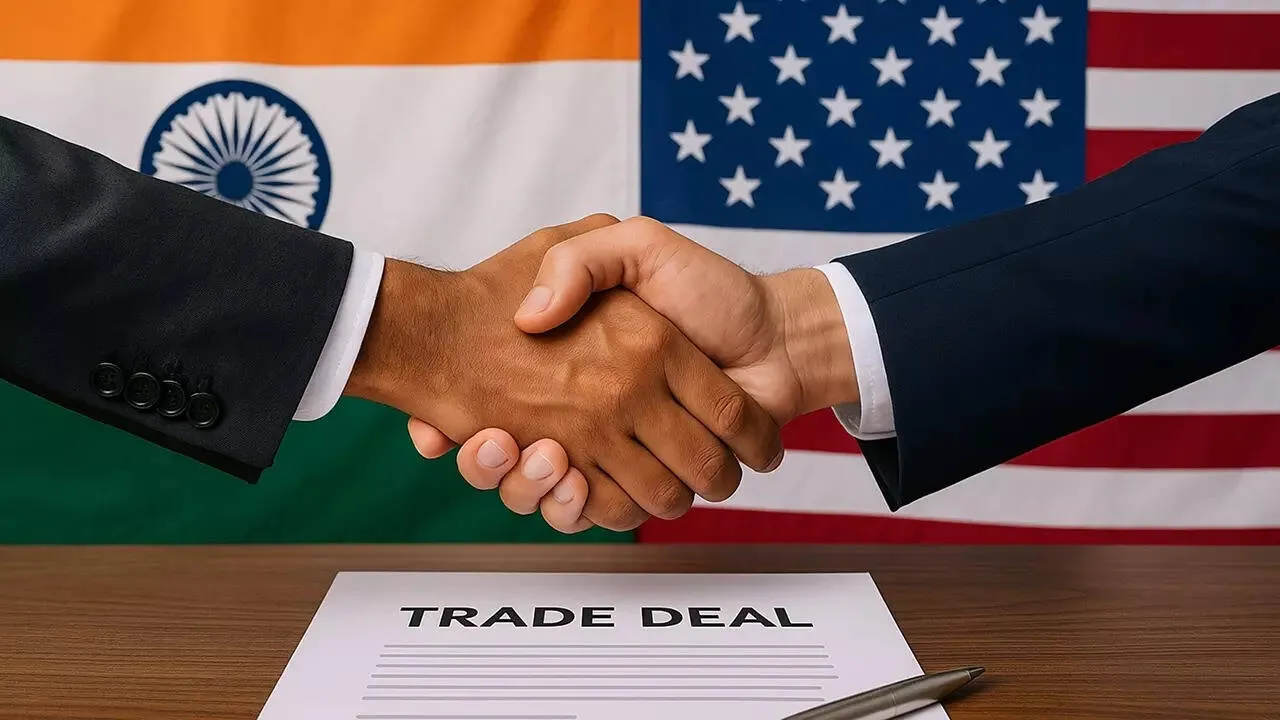]The strategic trade relationship between India and the United States is facing turbulent times as fresh tensions over tariffs and trade policies threaten to derail long-anticipated progress toward a comprehensive bilateral trade deal. Despite years of negotiations and mutual interest in strengthening economic cooperation, both nations now find themselves grappling with renewed protectionist policies, unresolved trade barriers, and competing domestic priorities.
Background: A Long-Standing but Uneven Relationship
India and the United States have long shared a dynamic economic partnership, with bilateral trade reaching over $190 billion in recent years. The relationship has been bolstered by growing collaboration in technology, defense, energy, and services. However, despite strong commercial ties, a formal Free Agreement (FTA) has remained elusive.
Over the years, several sticking points have hindered progress. These include disagreements over digital services taxes, agricultural market access, intellectual property rights, pharmaceutical regulations, and e-commerce restrictions. Although there have been efforts to resolve these issues through limited packages and tariff rollbacks, a comprehensive trade deal has never materialized.
Rising Tensions: Tariffs, Retaliation, and Political Pressure
In recent months, trade tensions have escalated significantly. U.S. officials have expressed concern over India’s continued protectionist measures, including high tariffs on American goods such as motorcycles, medical devices, solar panels, and agricultural products. In response, U.S. Representative (USTR) Katherine Tai has hinted at potential retaliatory tariffs unless India loosens its restrictions.
India, on the other hand, argues that its tariffs are essential to protect local industries and support its Make in India and Atmanirbhar Bharat (self-reliant India) initiatives. Indian policymakers also point to the U.S.’s own history of using tariffs as leverage, especially under the previous administration’s America First policy. This mutual suspicion has only deepened disputes and delayed meaningful resolution.

Digital Services Tax and E-Commerce Disputes
A major flashpoint in recent negotiations is India’s digital services tax (DST), which imposes a 2% levy on revenue earned by foreign e-commerce companies from Indian users. Particularly impacted by this tax are American tech behemoths like Facebook, Google, and Amazon. The U.S. has labeled the DST as discriminatory and has threatened retaliatory tariffs if India does not roll it back.
Meanwhile, India remains firm in its stance, arguing that digital taxes are necessary to ensure fair revenue distribution from tech platforms operating on Indian soil. India has also introduced stricter rules on e-commerce platforms, including data localization requirements, restrictions on discounts, and increased scrutiny of foreign-owned online marketplaces. These regulations are seen by the U.S. as barriers that disadvantage American businesses.
Medical Devices and Agricultural Trade Barriers
Another major source of contention is India’s price control policies on medical devices, particularly cardiac stents and knee implants. The U.S. medical device industry has raised alarms over price caps, arguing they distort the market and hurt innovation. Washington has pushed India to allow market-based pricing, but India remains committed to ensuring affordability for its citizens.
Agriculture is also a sore point. India maintains high import duties on American farm products like almonds, walnuts, apples, and dairy. The U.S. seeks greater access for its agricultural exports, while India continues to protect its large, politically sensitive farming sector. Any relaxation in agricultural tariffs could trigger domestic backlash for both governments, especially with elections on the horizon in both countries.
The GSP Withdrawal and Its Aftermath
In 2019, the U.S. revoked India’s beneficiary status under the Generalized System of Preferences (GSP), which had allowed duty-free access to certain Indian exports worth over $6 billion annually. The move was in response to India’s alleged failure to provide equitable market access to American firms.
India has since sought reinstatement into the GSP program, but the U.S. insists on structural trade reforms in return. The absence of GSP benefits has hurt Indian exporters in sectors like textiles, gems, jewelry, and automotive parts. Additionally, the impasse has tempered hopes for more extensive cooperation.

Political Climate and Diplomatic Considerations
The timing of these trade frictions is particularly sensitive. With elections approaching in both countries—India in 2024 (which have already concluded), and the U.S. facing elections in November 2024 (already completed)—leaders are under immense pressure to adopt domestically favorable policies. Protectionist rhetoric and nationalistic policies often gain traction during such periods.
Despite the tensions, both governments continue to highlight the importance of bilateral ties. Prime Minister Narendra Modi and U.S. President Joe Biden have emphasized shared values, defense cooperation, and mutual economic goals. High-level visits and dialogues continue, but translating diplomacy into tangible trade outcomes remains a challenge.
The Risk of a Trade War
If current disputes escalate into tariff retaliations, the consequences could be significant. A full-blown trade war could disrupt key supply chains, lead to increased consumer prices, and harm industries on both sides. Indian exporters, particularly in pharmaceuticals, textiles, and information technology, could lose crucial market access in the U.S. Meanwhile, American companies might face higher costs and tighter regulations when operating in India.
Uncertainty over trade policies and tariffs is a big worry for companies. Investors seek stability and predictability—traits currently lacking in the India–U.S. landscape. Without a clear path forward, many global companies may delay investment decisions or reroute supply chains to more predictable markets.
Path to Resolution: Can Diplomacy Bridge the Divide?
There is still cause for optimism in spite of the difficulties. Both countries have a strategic interest in strengthening economic ties, especially in the face of rising Chinese influence in Asia. Shared interests in defense, technology, energy, and education can provide a foundation for resolving trade disputes.
A potential path forward could include a phased trade agreement focused on resolving specific issues, such as digital taxation, medical device pricing, and agriculture access, before moving toward a comprehensive FTA. Joint working groups, industry dialogues, and bilateral summits can also facilitate constructive engagement.
India could also consider offering limited tariff concessions or regulatory transparency in exchange for the restoration of GSP benefits. Meanwhile, the U.S. could recognize India’s developmental needs and adopt a more flexible approach to digital taxes and e-commerce regulations.
Related Blog: AI Agents Transforming Business in 2025
Conclusion: A Delicate Balancing Act
The India–U.S. trade relationship stands at a crossroads. While the economic potential of this partnership remains immense, entrenched disagreements and looming tariffs threaten to undermine years of diplomatic goodwill. As both governments navigate political pressures and global uncertainties, the need for pragmatic negotiation has never been greater.
To avoid a trade impasse—or worse, a trade war—leaders in Washington and New Delhi must prioritize mutual benefit over short-term political gains. Only through constructive engagement, respect for each other’s economic realities, and commitment to fair trade practices can the two largest democracies in the world build a future of shared prosperity.
Frequently Asked Questions (FAQs)
Q1: What is the current status of the India–U.S. trade deal?
As of mid-2025, India and the U.S. have not finalized a comprehensive trade agreement. Talks are ongoing, but they face obstacles related to tariffs, digital taxes, and market access.
Q2: Why did the U.S. withdraw GSP benefits from India?
The U.S. revoked GSP in 2019 due to concerns over India’s trade barriers and lack of equitable market access for American companies.
Q3: What are the main trade disputes between India and the U.S.?
Key disputes include India’s digital services tax, restrictions on e-commerce, price controls on medical devices, high agricultural tariffs, and withdrawal of GSP.
Q4: Will there be a trade war between India and the U.S.?
While tensions are rising, both sides appear committed to avoiding a full-blown trade war. However, continued escalation without compromise could increase the risk.
Q5: What sectors are most affected by the trade tensions?
Pharmaceuticals, textiles, medical devices, agriculture, and technology are among the sectors most affected by the ongoing disputes.




